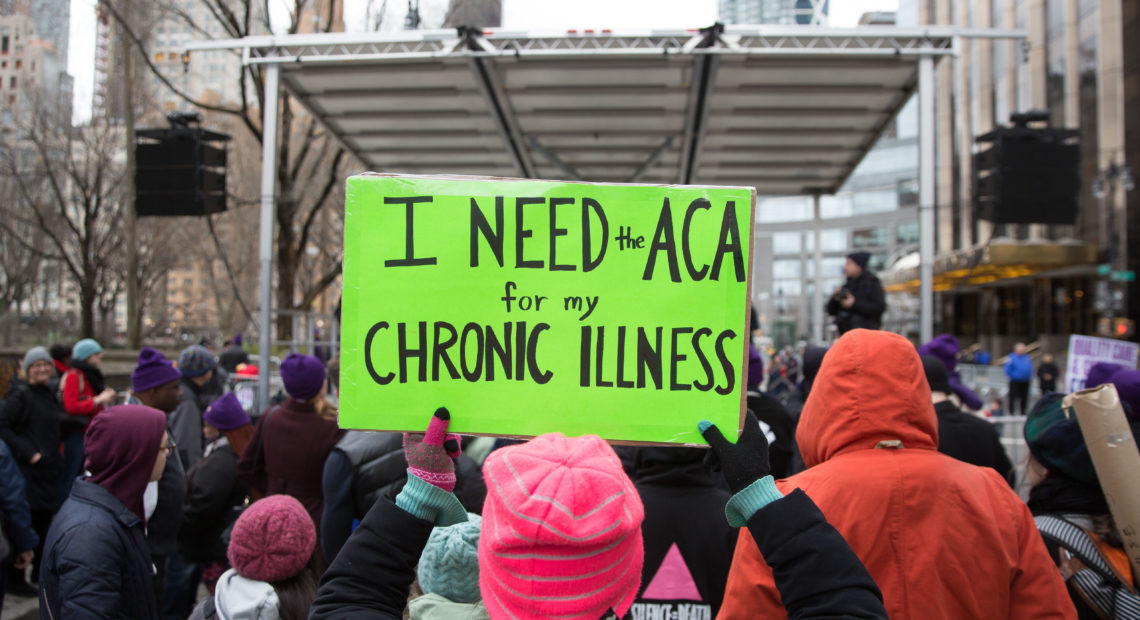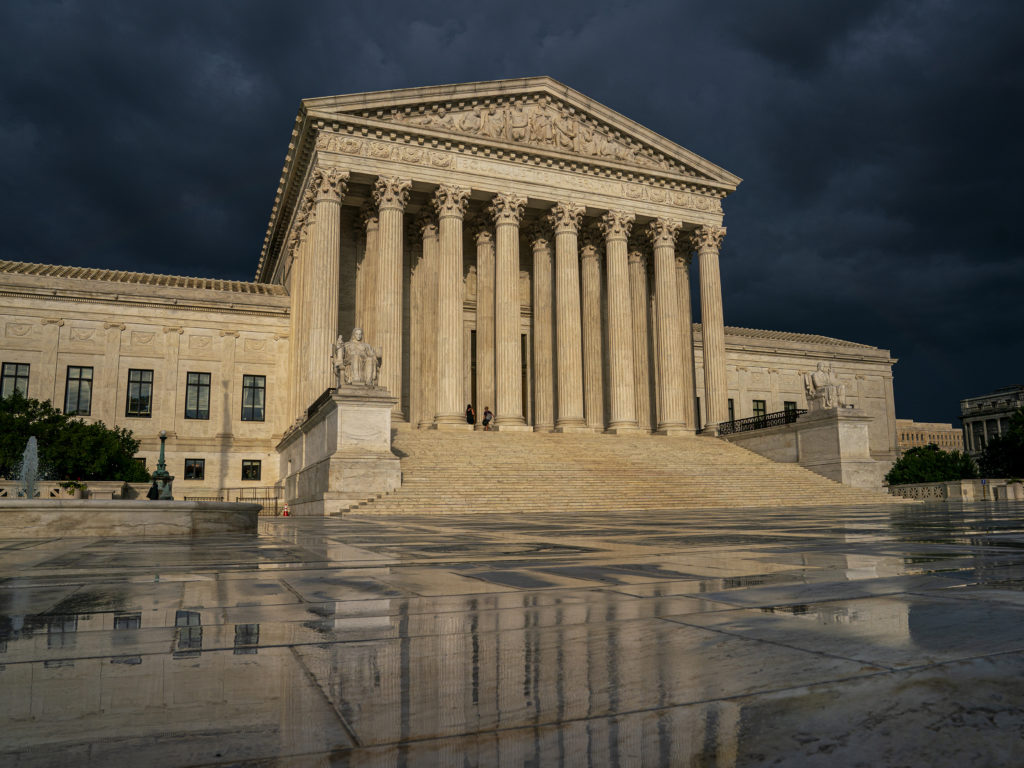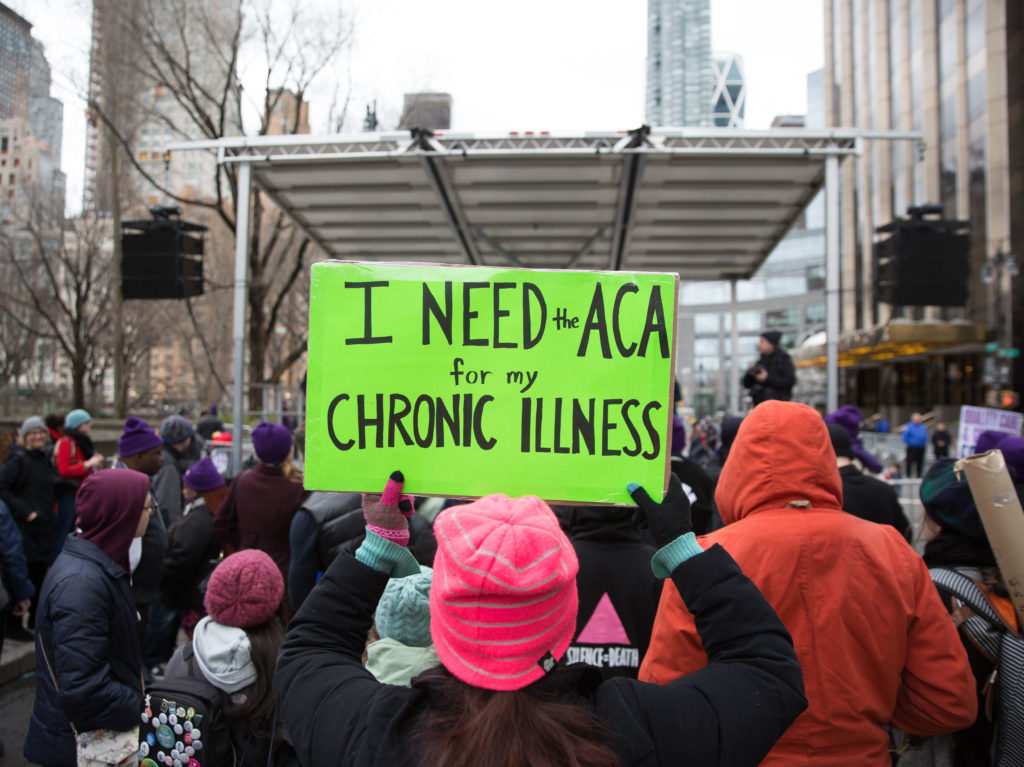
Affordable Care Act Again Goes Before Supreme Court, Now With Amy Coney Barrett On Bench
LISTEN
Audio PlayerBY NINA TOTENBERG
Obamacare is back before the Supreme Court on Tuesday, with opponents challenging it for a third time. The first attempts to derail the law failed in the high court by votes of 5-to-4 and 6-to-3. But the makeup of the court is very different now, with three justices appointed by President Trump – among them new Justice Amy Coney Barrett.
Before her nomination, Barrett consistently criticized the court’s two previous decisions, a critique that Senate Democrats repeatedly bludgeoned her with at her confirmation hearings.
But the ACA has remained in place for a decade, and the legal landscape has changed so much over that time that many of those who originally took issue with the law in the Supreme Court think this challenge is a stretch. In fact, most of the groups that fought the ACA after it was enacted in 2010 are missing in action from Tuesday’s case.

The Supreme Court considers the latest challenge to the Affordable Care Act on Tuesday, Nov. 10, 2020. CREDIT: J. Scott Applewhite/AP
The most controversial part of the ACA when it passed was the requirement that people either buy health insurance or pay a penalty. In 2012, Chief Justice John Roberts and the court’s other conservative justices ruled that the individual mandate exceeded Congress’ power to regulate interstate commerce. But Roberts provided the fifth vote to uphold the penalty anyway on the grounds that it amounted to a tax and thus fell within the taxing power of Congress. Bottom line: The mandate survived.
Now comes another challenge to the ACA, brought by Texas, other GOP-dominated states and most significant of all, the Trump administration. They assert that because the penalty has been zeroed out, it raises no revenue, is no longer a tax and thus is unconstitutional.
Challengers want the law struck down
What’s more, the ACA challengers argue that the mandate is so interwoven with the rest of the law that Obamacare must be struck down in its entirety.
But even lawyer Paul Clement, who made that argument in 2012 in the Supreme Court on behalf of those challenging the law, sees the situation today as different because the mandate “doesn’t have any teeth.”
With the Trump administration refusing to defend the law — something this administration has done far more often than those in the past — the House of Representatives has stepped in to defend it, along with 20 mainly Democratic states. Representing the House on Tuesday will be Donald Verrilli, who successfully defended the law when he was solicitor general in the Obama administration.
The argument against the ACA this time “has kind of a funhouse mirror quality to it,” he contends. “What President Trump said, and what the congressional leadership said, and virtually everybody said when they enacted this amendment in 2017 … is they were repealing the mandate” by getting rid of the penalty.
“Congress is allowed to learn from experience,” he says. “You can’t lock the 2017 Congress into the judgment” that it made in 2010. In fact, Congress asked the Congressional Budget Office in 2017 for its expert opinion, and “the CBO came back and told Congress that yes, it will continue to function effectively if you zero out the tax.”
But the Trump administration will argue that the mandate is still on the books. Or as Chapman University law professor John Eastman puts it, “Just because there’s no longer a penalty doesn’t mean that there’s no mandate to buy insurance.” Eastman is among a relatively small group of conservatives who have weighed in with briefs siding with those seeking to invalidate the ACA in this latest case.
But most of the groups that originally objected to the ACA in the earlier cases – including business groups – this time have not joined the challenge.
ACA’s supporters
By contrast, just about all the actors in the health industry – from the American Medical Association, to hospitals across the country, to the insurance industry – have weighed in urging the Supreme Court to preserve the law.
Ultimately the question the court is likely to decide is whether the mandate language can be struck from the law by itself, or whether it is so intertwined with the rest of the law that the whole ACA must be struck down. In legal terms, it’s whether the mandate language is severable or not.

The Justice Department sent a letter in support of repealing the entirety of the Affordable Care Act. Here, a sign in support of the ACA in April 2017 in New York City. CREDIT: Kevin Hagen/Getty Images
Severability is a term that almost seems guaranteed to make people’s eyes glaze over. But the chief justice probably explained it best last term when he said that one important part of the law creating the Consumer Financial Protection Bureau was unconstitutional, but the rest of the law could remain intact.
“We think it clear that Congress would prefer that we use a scalpel rather than a bulldozer in curing the constitutional defect we identify today,” Roberts wrote.
Shortly after that decision, when the court issued an opinion in a case involving robocall regulation, Justice Brett Kavanaugh made a similar point.
“Constitutional litigation is not a game of gotcha against Congress, where litigants can ride a discrete constitutional flaw in a statute to take down the whole, otherwise constitutional statute,” Kavanaugh wrote.
In the ACA case, Verrilli, representing the House, will tell the justices that “the easy and obvious answer is to sever the rest of the law and let it continue to operate just as Congress intended in 2017.”
“It is Congress’ job to make policy, not the court’s,” and “Congress has repeatedly refused to repeal the law, including in 2017” when it zeroed out the penalty, Verrilli contends.
To do otherwise, he says, would “throw the health sector into chaos.”
In fact, there would be enormous practical consequences were the court to throw out the whole ACA. Health care accounts for about one-fifth of the U.S. economy.
Practical consequences
“Tens of millions of [previously uninsured] people who gained coverage under the law’s various pathways could lose that coverage overnight,” says Renuka Tipirneni, a primary care physician and health policy researcher at the University of Michigan hospital.
Gone as well would be the ban on discrimination based on preexisting conditions – from cancer, to COVID-19, to asthma, diabetes and much more. Until the ACA was enacted, insurers refused to cover people with preexisting conditions, or charged them much more for insurance. The ACA made those practices illegal.
Also eliminated would be coverage for low-income adult Americans who became eligible for Medicaid when all but a dozen states took advantage of the ACA to expand federally subsidized coverage under the Medicaid program. Among those who have benefited are many who lost their health insurance when they lost their jobs in the COVID-19 pandemic.
Indeed, the scope of the ACA’s protections for all Americans is so wide that most people now take them for granted, Tipirneni says. These include provisions that cut drug costs for older Americans to those that eliminated many co-pays and allowed young adults to stay on their parents’ insurance until turning 26.
With all that on the chopping block Tuesday, it is no exaggeration to say that the future of the ACA is up to the Supreme Court.
9(MDAyOTk4OTc0MDEyNzcxNDIzMTZjM2E3Zg004))















